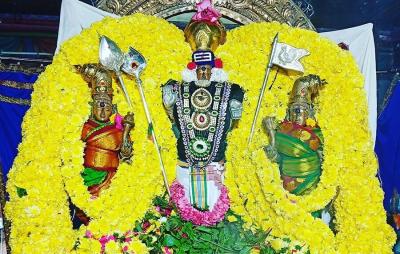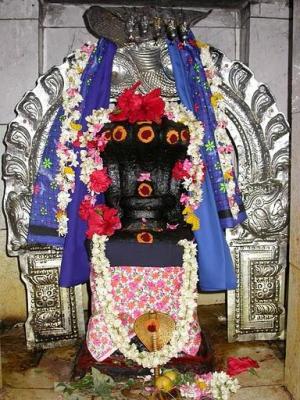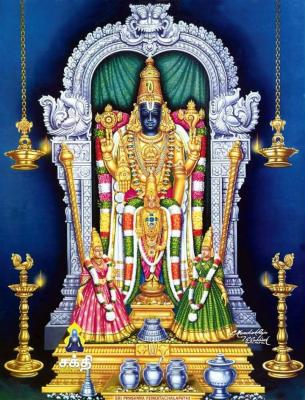Lord Krishna's final appearance - after the end of Krishnavatar.
Rajagopalaswamy Temple in Mannargudi town near Thanjavur, is one of the most ancient and important Lord Krishna temples in the country. It is also called ‘Dakshina Dwaraka’. The ancient town of Mannargudi was just an Agraharam until the entry of Thanjavur Nayaks in the 16th century. The beautiful Agraharam derived its name from Mannarkovil or Rajamannarkovil. In Tamil Vaishnavaite literature, Mannar means 'Lord Vishnu' and Kovil means 'the abode of Vishnu'. Initially, Mannargudi was bordered by the tall compound walls of Rajagopalaswamy temple. It became popular only when Thanjavur Nayaks made it their capital and Rajagopalaswamy Temple became the centre of attraction.
The legend behind the temple says that, Sages Gopila and Gopralaya underwent severe penance praying to Sriman Narayana. Lord was pleased at the devotion of his devotees and instructed them to visit Dwaraka to attain the blessings of Lord Krishna. Sage Gopila and Gopralaya went to Dwaraka and when they arrived at Dwaraka, the Krishnavathar of Lord Vishnu was over. Sages were disappointed and very much disheartened. Narada maharishi advised the sages to go to Mannarkudi and do penance to have Krishna Darisanam. Sages arrived in this sacred land and continued to follow severe penances and they prayed to Sriman Naryana. The Lord was pleased at their devotion and once again revealed Krishnavathar and showed them the form of all 32 Leelas he did in Dwaraka. As requested by the sages Lord stayed at this place as Rajagopalan and Vaasudevan. According to scriptures of Mahabharatha, Sage Pulastya describes the grandeur of this temple to Pithamahar Bheeshmar that whoever stays overnight in this sacred place would achieve the merit of a 1000 Godhanam (donating 1000 cows).
Mannarkudi Rajagopalaswamy temple is spread over an area of 33 acres. Lord Krishna appears as a shepherd boy with a whip on hand and a turban on his head. He has butter on the right hand and adorned with jewels worn by children with bangles in hand. There is a cow and two calves by his side. Moolavar is called Vaasudeva Perumal and Urchavar is called Rajagopalaswamy. Thayar is called Sengamala Thayar. There are 9 tanks (Theertha Kulam) inside this temple complex.

This is one of the oldest temples in Kaveri Delta region, built in the year 1072-1150 AD by the King Kulothunga Chola I and II of Chola Dynasty. This grand temple occupies 33 acres of land with a majestic Rajagopuram of 154ft height and it has 7 Praharas, 16 temple Towers, 18 Vimanams and also enshrines of 24 Gods and Goddess. In this temple the 1000 pillar mandapam and the magnificent wall encircled the temple are built by the King Vijayaraghava Nayak. He also erected the big Raja Gopuram in the temple so that he can view the Srirangam Ranganathaswamy temple from the top of it. The Nayaks were especially interested in music and it was promoted in the temples. Instruments like Mukhavina, Dande, Kombu, Chandravalaya, Bheri and Nadhaswaram were commonly used in the temple service.

The 18-day Panguni Brahmotsavam celebrated during March-April every year is very among Vaishnavites al over the world. It is said that Rajagoplaswamy temple has not been glorified by Azhwars. But there are evidences that Thirumangai Azhwar set up a Kodi Maram (flag post) outside the temple with the help of cotton bales. Also, various Azhwars have visited the temple. Unfortunately the ancient scriptures of Divya Prabandhams have not been discovered like many lost Tevaram songs.









Leave a Comment